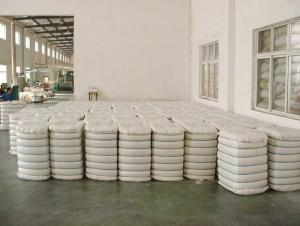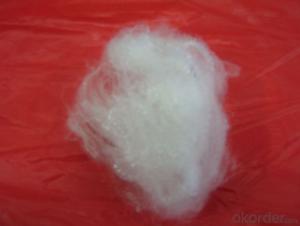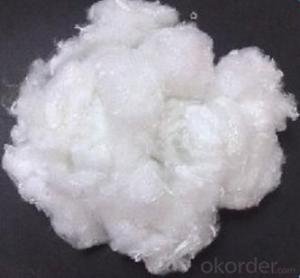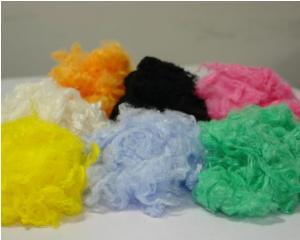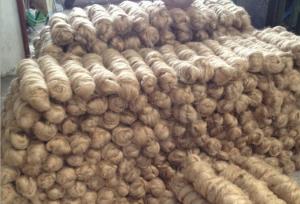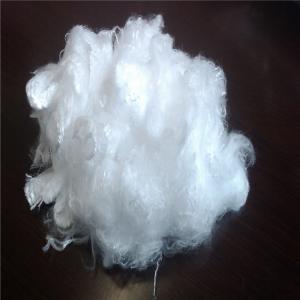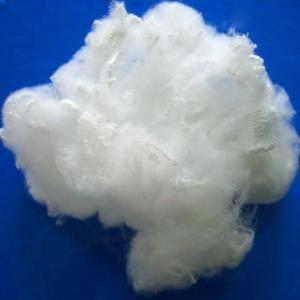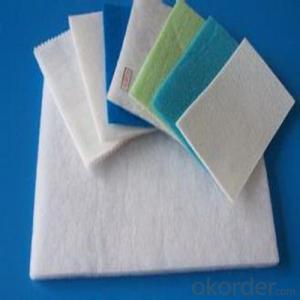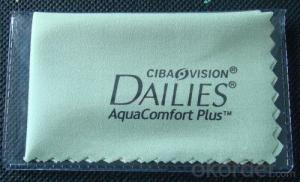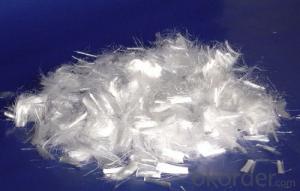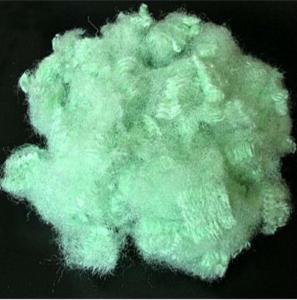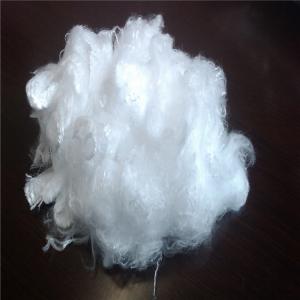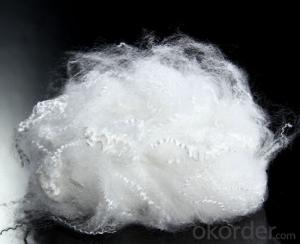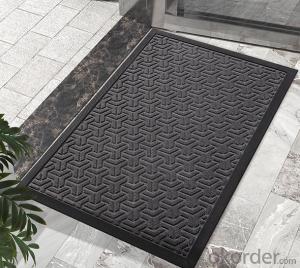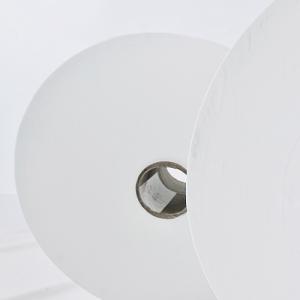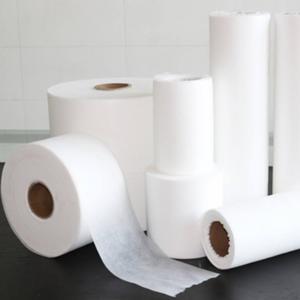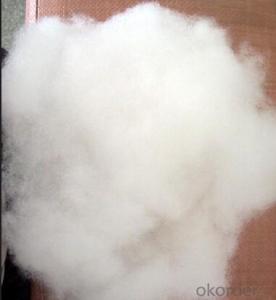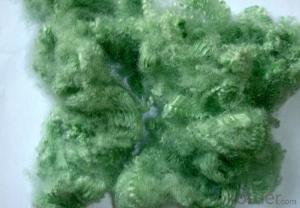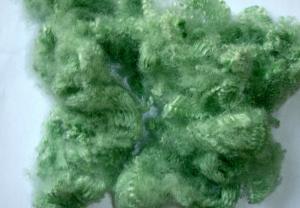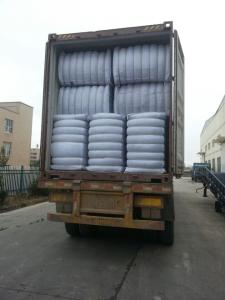PP Staple Fiber used for Interior Carpet
- Loading Port:
- China Main Port
- Payment Terms:
- TT OR LC
- Min Order Qty:
- -
- Supply Capability:
- -
OKorder Service Pledge
OKorder Financial Service
You Might Also Like
Description of PP Staple Fiber used for Interior Carpet:
1.Usage: psf/PP fiber/polyester staple fiber are used for the filling of the toys ,cushions,pillows,sofas,non woven and so on ;
2.Denier: 3D,6D, 7D, 10D, 12D, 15D,18D ;
3.Cut length:32MM,51MM,64MM;
4. Siliconized and non-siliconized;
5.have different color grades: raw white, pure white,super white,green;
6.Packing:pp baled;
7.Weight:220kgs/bale;
8.All fibers are manufactured using the best recycled PET flakes imported from Europe;
Features of PP Staple Fiber used for Interior Carpet:
Raw Material | Polypropylene | Crack Elongation | 15-25% |
Type | Monofilament | Density | 0.91g/cm3 |
Fiber Dia | 10-45um | Melting Point | 160---170°C |
Tensile Strength | ≥500Mpa | Resistance to Acid, Alkali | Strong |
Size | 6-48mm | Water Absorbency | No |
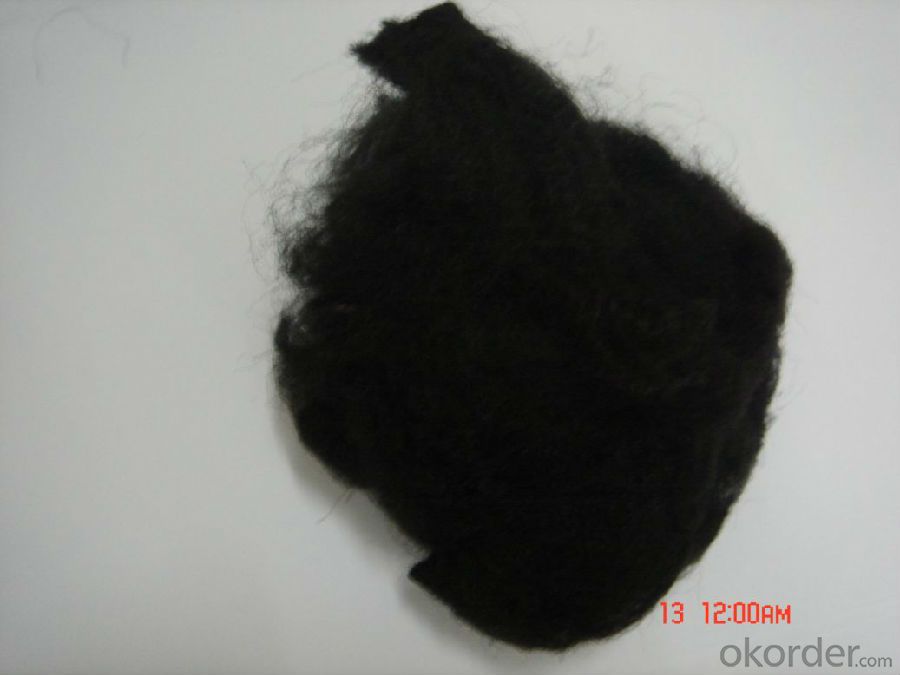
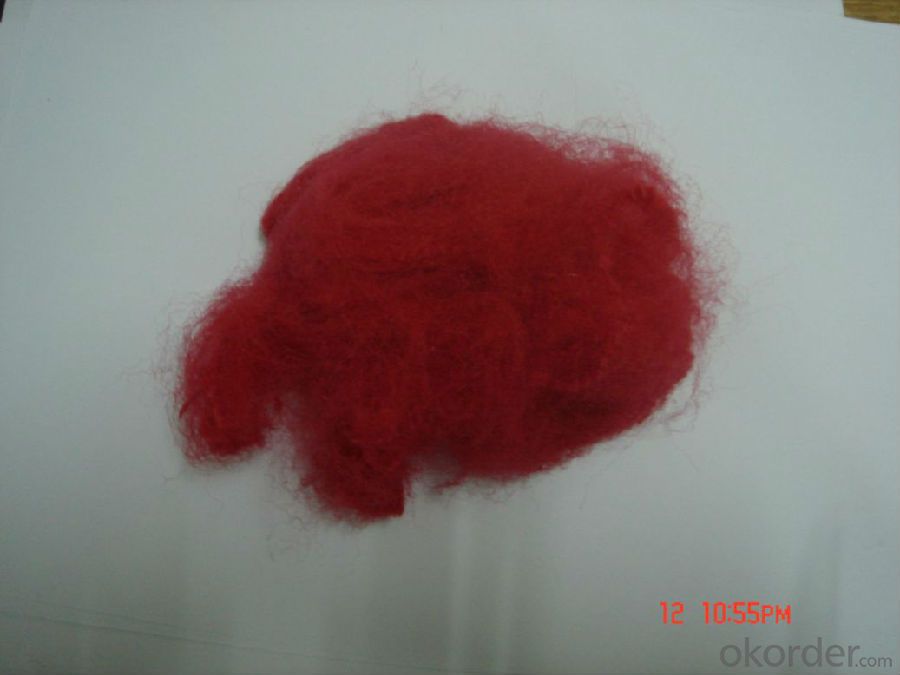
- Q:What kind of metal material does steel fiber belong to?
- Steel fiber is divided into melting, drawing, cutting, shearing and cutting because of its different processing methods. Shear type steel fiber can produce straight, micro, twist, wave, end hook, bow and indentation five shapes, more than 20 specifications of products.
- Q:What is the difference between regenerated fibers and Lesel fibers?
- The development of regenerated cellulose fiber can be divided into three stages on the whole, forming the three generation products. The first generation was the ordinary viscose fiber, which was released in the early twentieth Century to solve the cotton shortage. The second generation was started in 1950s to realize industrialized production of high wet modulus viscose fiber, its main products include Japan R & D toramomen (named Polynosic) and the change of American R & D high wet modulus fiber HWM and Lenzing Co in late 80s by the new process of production of Modal fiber. In late 60s, due to the rapid development of synthetic fiber production technology, low cost and adequate sources of raw materials, synthetic fibers have greatly affected the market position of regenerated cellulose fiber. Many research institutions and enterprises to pay more attention to the development and application of new synthetic fiber. During this period, the development of regenerated cellulose fibers in the world tended to be stagnant. Third generation products are introduced in 1990s staple fiber Tencel (Tencel), filament Newcell as a representative. Influenced by the awareness of health and environmental protection, nature and other factors, people have a new understanding of the physicochemical properties of regenerated cellulose fiber, a new generation of regenerated cellulose fibers has been fully improved, therefore, the application of regenerated cellulose fibers of the re emergence of rapid development.
- Q:Is 100% polyester fiber good?
- Polyester fiber generally refers to polyester fiberAdvantages: fabric crisp, smooth, bright color. Pregnant bone elastic, moisture absorption, good ventilation, smooth surface, there is a certain waterproof function.Disadvantages: from static electricity, feel bad.
- Q:The difference between polyvinyl alcohol and polypropylene fiber
- Polypropylene fibers made of polypropylene and a variety of organic and inorganic materials, the composite refining technology of special form, can improve the fracture toughness of concrete, improve the anti cracking performance of concrete, mortar and concrete engineering is cracking, seepage, wear resistance, thermal insulation material of the ideal model.
- Q:What is the difference between bamboo charcoal fiber and bamboo fiber?
- The bamboo fiber production process is as follows:Bamboo, bamboo, bamboo, bamboo pulp, refined cellulose fiber "bamboo"The bamboo charcoal fiber, is the growth in the south for 5 years bamboo as raw material by carbonization, and then put into bamboo charcoal nano nano bamboo charcoal powder. Then the traditional viscose preparation process, nano bamboo charcoal powder after surface treatment, dispersion, through a special process will add milk paste in viscose, mixed evenly, and then spinning composition of acid bath to make the appropriate adjustments to the drawing forming, preparation of bamboo charcoal viscose fiber qualified.Thus, the nanometer grade bamboo charcoal powder can be uniformly distributed on the superfine fiber so as to achieve the ultimate goal of the modification of the chemical fiber
- Q:The difference between recycled and synthetic fibers
- Synthetic fiber is a kind of chemical fiber, chemical fiber is referred to as synthetic polymer compounds as raw materials and prepared. Its small molecular organic compounds as raw materials, by polyaddition or polycondensation reaction synthesis of linear organic polymers, such as acrylic, polyester and polyamide fiber. The classification can be seen from a it belongs to the category of chemical fibers. The regenerated fibre with natural polymer as raw material, made by chemical method, and the original polymer in chemical fiber chemical composition is basically the same.
- Q:What is the use of hydroxyethyl cellulose thickener?
- Commonly used as thickening agent, protective agent, adhesive, stabilizer and preparation of emulsion, gel, ointment, lotion, eye cleaning agent, suppository and tablet additive, also used as a hydrophilic gel skeleton material, and preparation of sustained-release preparation, also can be used for food as the stabilizer etc..
- Q:What's the difference between polyester fiber and viscose fabric? Which cost is higher?
- Simple speaking is the first viscose cotton linter (you can also use other) made of pulp board, and pulp board after smashing into the caustic soda made of alkali cellulose, alkali cellulose, carbon disulfide, reaction of caustic soda alkali cellulose xanthate.
- Q:Will the material be 100% polyester fabric?
- Cotton is more expensive than it is now, the people pay attention to the pure natural cotton, but expensive, this is the name of many manufacturers clothes containing cotton ingredients and raise the price of cotton and polyester fiber together can complement each other, good wear comfort, but relatively speaking cotton cost is reduced, but the pit% polyester fiber the 100 is not good, after all, this material is a chemical compound material, is not conducive to good health
- Q:What are the different effects of mascara and fiber?
- And there are long mascara points and encryption, and generally not long fiber mascara, but can be lengthened, and the encrypted Mascara fiber more, there will be growth and make lashes look relatively dense.
1. Manufacturer Overview |
|
|---|---|
| Location | |
| Year Established | |
| Annual Output Value | |
| Main Markets | |
| Company Certifications | |
2. Manufacturer Certificates |
|
|---|---|
| a) Certification Name | |
| Range | |
| Reference | |
| Validity Period | |
3. Manufacturer Capability |
|
|---|---|
| a)Trade Capacity | |
| Nearest Port | |
| Export Percentage | |
| No.of Employees in Trade Department | |
| Language Spoken: | |
| b)Factory Information | |
| Factory Size: | |
| No. of Production Lines | |
| Contract Manufacturing | |
| Product Price Range | |
Send your message to us
PP Staple Fiber used for Interior Carpet
- Loading Port:
- China Main Port
- Payment Terms:
- TT OR LC
- Min Order Qty:
- -
- Supply Capability:
- -
OKorder Service Pledge
OKorder Financial Service
Similar products
New products
Hot products
Related keywords
